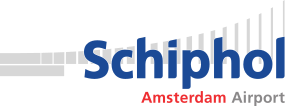Central GIS system offers a clear view of assets
Schiphol, the fifth busiest airport in Europe, uses Esri’s ArcGIS as an asset management tool to gain a clear understanding of all assets on its site, from underground cabling to individual runway lights. This single asset management solution plays a vital role in improving operational efficiency while supporting more pro-active decision-making.
The Customer
Schiphol Airport, one of Europe’s busiest airports, needed to develop a simple and easy-to-use asset management system that would provide a clear view of all assets, keeping information up-to-date, accurate and complete. With a detailed list or requirements, Schiphol approached Esri Netherlands and its partners to create a platform that would support the easy entry and retrieval of data and information.
Schiphol has switched to GIS to optimise its entire business operations. All assets can now be viewed with one common operational picture
The Challenge
Previously, the diversity of Schiphol’s assets such as buildings, platforms and runways, gas, water, lighting and cabling, made it extremely challenging to locate asset information and create management reports. The airport unsurprisingly used multiple systems to perform these tasks, which proved to be an inefficient process. “We wanted to move to a system where we could centrally manage and retrieve all asset information,” said Nico Wasserman, Head of Data Management, Schiphol. “But the variety of assets made that difficult.”
With the new integrated system, Schiphol can now be more proactive in its decision-making when there are maintenance interventions or disruptions
Nico Wasserman – Head of Data Management, Schiphol
Greater transparency
With the new integrated system, Schiphol can now be more proactive in its decision making when there are maintenance interventions or disruptions. It is possible to see, at a glance, the consequences of disabling one component on other vital facilities; for example the impact of an electrical failure on other installations can be seen immediately. “We can then act quickly and decisively, extremely important in a dynamic environment such as Schiphol”, according to Wasserman.
Schiphol has made major improvements in the speed of resolution to emergency incidents, given the access to all information, at any time, from any location
The evolution of a new technology platform: SGIS
In 2005, Schiphol decided to switch to GIS in order to optimise its entire business operations. Since then all surface and underground assets have been mapped and it is now possible to ‘unlock’ and view the information with one common operational picture. “We have carried this out in planned phases and are now reaping the rewards,” added Wasserman. By implementing SGIS (Schiphol GIS), Schiphol has been able to replace the multiple systems that were in place. “Adopting this approach has resulted in our entire IT architecture becoming more transparent. By replacing the different asset information systems with one central GIS system, the quality of the information increases accordingly.”
The immense size of the site and developments such as Bring Your Own Device, make it completely impractical for the workforce to access to SGIS purely from fixed workplaces
Any place, any time
Supporting operational service bodies, along with Schiphol, can view any malfunction regardless of the malfunction’s location. This has major benefits particularly during an emergency incident; access to all information, at any time, and at any place, can make a major difference in the speed of resolution.
Asset information in the SGIS can also be obtained via a web portal. Wasserman anticipates that employees will soon be able to walk to the relevant field location with their smartphone or mobile device, carry out their required duties and enter the information directly into the system. “This is of particular importance for an airport city such as Schiphol. The immense size of the site and developments such as Bring Your Own Device, make it completely impractical for the workforce to access to SGIS purely from fixed workplaces.”
The entire IT architecture has become more transparent and the quality of information has increased
Analysis and visualisation
In recent years, Schiphol and Esri have worked together to build the asset management platform so that every authorised employee can add and retrieve data relating to his/her own work area. Numerous parties have worked together on collating and structuring the entirety of the data, ensuring that all knowledge workers have the ability to review and use the data within.
“Schiphol is really advanced in the field of data collection, they want to do more than just collect data,” said Alexander Molhuysen, Business Manager at Esri Netherlands. “They want to be able to utilise all of their data, retrieve the appropriate information in a simple way so they can make the correct decisions, quickly.”
SGIS also has applications in other areas, such as maintenance work. “Sometimes, when work is carried out, it is necessary to close a corridor, pier or hallway,” added Molhuysen. “The routing must then be automatically adjusted and SGIS shows the alternatives, including the shortest route for redirecting passengers. When analysing malfunctions, the system not only visualises a 2D but 3D image showing, for example, sprinkler networks. A vast amount of information can be accessed regarding the composition of specific installations.”
We are going to continue integrating Schiphol’s systems, allowing the airport city to continually achieve efficiency gains and further improve operational synergies
Nico Wasserman – Head of Data Management, Schiphol
Innovation
Schiphol is keen to continue using Esri products in the future. With SGIS, the status of the entire breadth of its assets can be dynamically visualised in a Schiphol-wide map. And the system is scalable, with the ability to take on board additional data from integrated systems. “We are going to continue integrating Schiphol’s systems, allowing the airport city to continually achieve efficiency gains and further improve operational synergies” concluded Nico Wasserman.



